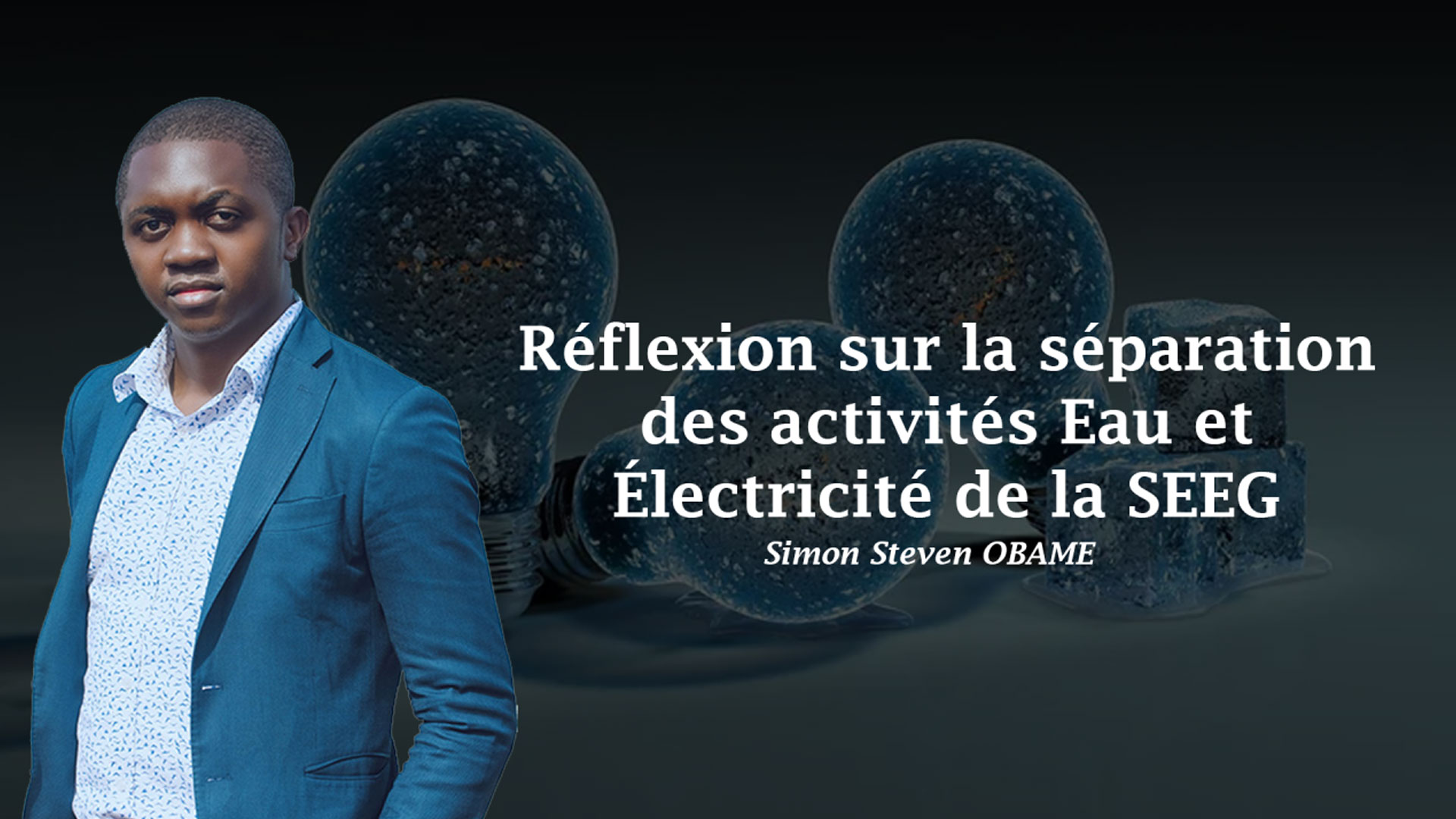To His Excellency Mr. Brice Clotaire OLIGUI NGUEMA, President of the Transition of Gabon and Candidate in the Presidential Election of 12 April 2025
Your Excellency,
This letter responds to your policy platform—specifically PILLAR 1 – ELECTRICITY, WATER, AND SECTOR REFORMS, and Axis 1.3.C—in which you propose to separate and autonomously manage the water and electricity divisions of SEEG.
I, the undersigned Simon Steven OBAME, an engaged citizen passionate about energy issues, submit this contribution with the utmost respect and constructive intent. This letter and its accompanying analysis reflect a careful observation of the technical, economic, and structural realities at SEEG. They are offered in the spirit of transparency and accountability, informed by past experiences in which well-intended state decisions did not always deliver the expected outcomes.
At present, Your Excellency, the Water division remains afloat largely thanks to the structural, financial, and operational support of the Electricity division. Without this implicit solidarity, the Water arm by itself would struggle to meet even the minimum requirements for economic viability and service quality.
According to the annual reports, SEEG’s revenue breakdown shows that electricity accounts for approximately 89.2 % of income, compared with 10.8 % for water. This imbalance has persisted for several years and underscores the Water division’s heavy dependence on Electricity.
SEEG Revenue Distribution – 2023
|
|
In practice, most water treatment plants rely on a continuous electrical supply—often provided by the Electricity infrastructure. Under a split, this consumed energy would henceforth be invoiced as an additional expense to the Water entity.
Beyond electricity costs, the entire economic model of the Water division remains in deficit. With a national throughput rate below 50 %, each cubic meter produced translates into less than half a cubic meter billed. In some interior regions, billing efficiency falls to 30 % or lower—chiefly due to rising unpaid bills since the company’s requisition in 2018.
Absent significant upfront investments in water infrastructure, any attempt to make the Water division viable will inevitably trigger a rise in the price per cubic meter. This tariff adjustment would be driven by the need to cover all operating expenses, including energy for pumping, treatment costs, aging‐infrastructure maintenance, and losses from poor throughput. Without subsidies or structural support, ensuring economic sustainability will require a fundamental overhaul of the current pricing model.
This dependence is not limited to technical means. Annual reports indicate that Water‐assigned staff represent only about 15.4 % of total workforce. Thus, even an administrative split would not materially reduce payroll costs: Water personnel remain indispensable for service continuity.
Moreover, one of the most telling indicators of internal dysfunction is billing efficiency. Between 2019 and 2023, electricity efficiency held relatively steady—between 73.0 % and 85.1 %—while water efficiency declined from 52.6 % to 45.9 %.
Evolution of Billing Efficiency at SEEG (2019–2023)
|
|
Therefore, without prejudging the ultimate relevance of a separation, it is essential to undertake a series of corrective measures in advance:
-
Establish a standalone Water entity with its own budget, overseen by recognized specialists.
-
Rapidly and comprehensively train the future Water division’s managers.
-
Deploy an intelligent, reliable, and auditable metering system.
-
Manage the institutional transition via a multisectoral continuity framework.
-
Guarantee a temporary financial equalization to offset initial imbalances.
-
Engage citizens through advisory committees to bolster transparency and public acceptability.
A separation could improve governance, but only if it realistically accounts for technical, economic, and social interdependencies. The still‐fragile Water division cannot survive without in‐depth planning for compensation mechanisms and cross‐sector investments. Otherwise, this split risks provoking a major social and health crisis—comparable to the emergency that led to the Karpowership partnership to limit load shedding in Libreville. The enormous cost of that temporary arrangement should serve as a warning: in the water sector, lack of foresight would not only cost billions but also precious time in achieving universal, reliable access for all Gabonese.
Thank you, Your Excellency, for considering this analysis. I remain at your disposal for any further discussion.
Read the full policy platform (french) :
Steven OBAME




